The following is a photo gallery featuring field research recently conducted in western Nebraska for the Soil Health Gap (SHG) project.

With a prominent Oregon Trail landmark as the backdrop, a team of researchers and scientists from the USDA Natural Resources Conservation Service (NRCS) and the University of Nebraska-Lincoln (UNL) participated in an effort to determine and catalog soil health properties in a native, undisturbed soil site for use in the Soil Health Gap (SHG) project.
In collaboration with the USDA NRCS, UNL’s Soil Specialist Dr. Bijesh Maharjan, Rangeland Specialist Dr. Mitch Stephenson, and Soil Health Researcher Dr. Saurav Das are leading the SHG project in Nebraska. The team identified a reference site near the Chimney Rock National Historic Site as part of that project. This spring, the group sampled soil and vegetation in an ongoing effort to inventory the reference vegetative community and the associated soil health properties which represent the current native potential of the soil ecosystem to function.
Such reference site data will allow producers to compare their cropland soil health with reference sites in the same agroecological region to determine their Cropland SHG. The estimated SHG will inform soil health management practices in an effort to close that gap. More about the SHG can be found here.
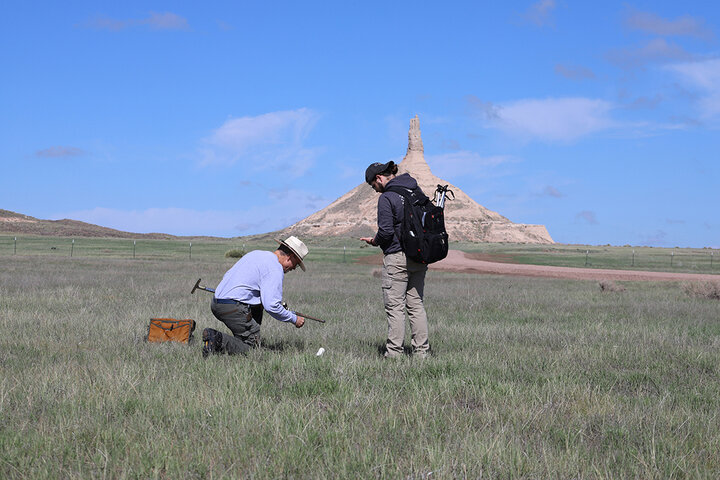
Casey Latta (left), Nebraska Major Land Resource Areas (MLRA) Office lead soil scientist, and Greg Paesl, MLRA soil scientist, used a soil sample probe to examine soil characteristics that would be expected for native undisturbed land in the Trip-Mitchell-Alice (TMA) soil association. A large area was canvased to consider soil profile characteristics before an adequate site was identified to begin the sampling process.
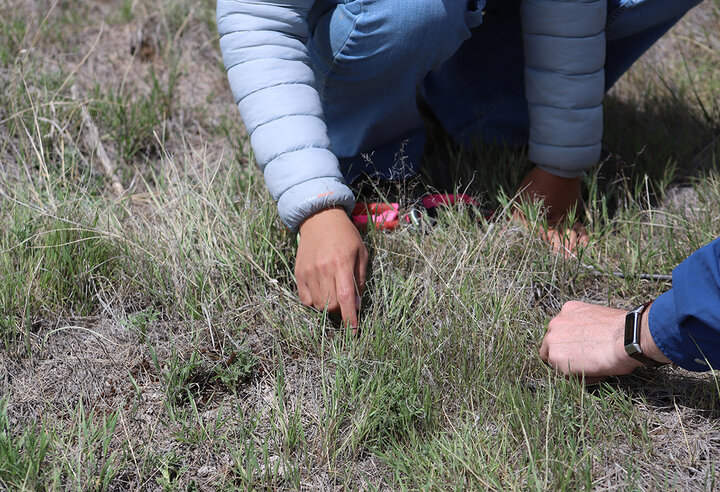
In addition to soil characteristics and a relatively uniform location (in terms of slope, disturbance, etc.), the site also had to contain a native community of biotic or plant species that would represent undisturbed, natural rangeland. Ana Clara Dos Santos Rodrigues, UNL Panhandle Research, Extension and Education Center (PREEC) range science intern, learned how to recognize plants that would be expected in a biotic community native to the area near Chimney Rock.
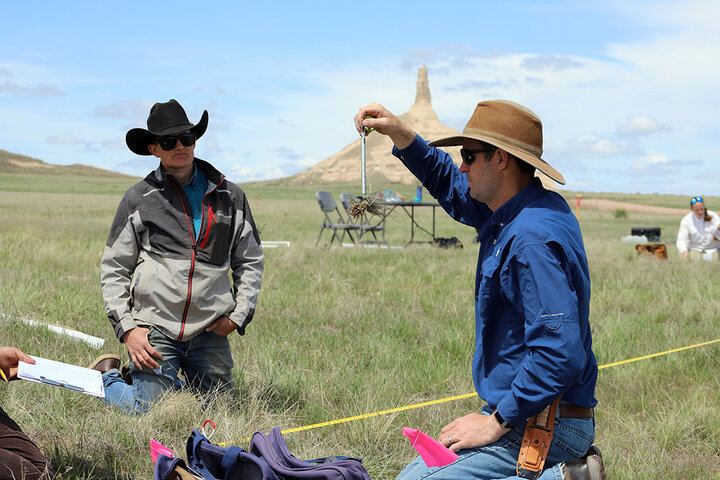
Once the evaluation site was chosen, Aaron Hird (right), Nebraska NRCS state soil health specialist, along with Kate Zander (left), UNL PREEC range science technician, began to identify and note the characteristics of the plant community in two-feet square sections along a marked 100-foot line. Hird used a spring scale to weigh like-bunches of biotic and then noted the number of similar bunches within the sample area before biomass samples were collected.

Riley Hackbart, Nebraska NRCS soil scientist, used a soil probe to collect core samples at one of the three designated areas within the selected site. After each sample was collected, the depth was noted and marked in the collection tray. The team collected core samples to a depth beyond 100 centimeters.
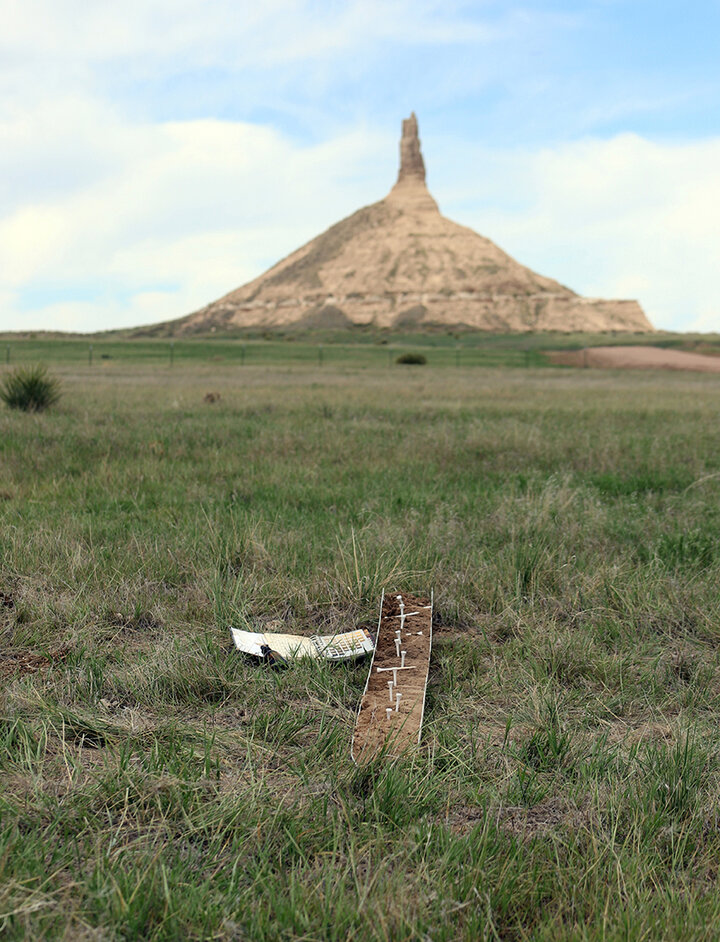
A full tray with markers clearly demonstrates the visual changes in soil — the lightest colored samples were taken from a depth near 80 centimeters. Beside the tray are the Munsell Soil Color chart and a dropper bottle of hydrochloric acid. The chart and acid are used for in-field soil characterization.
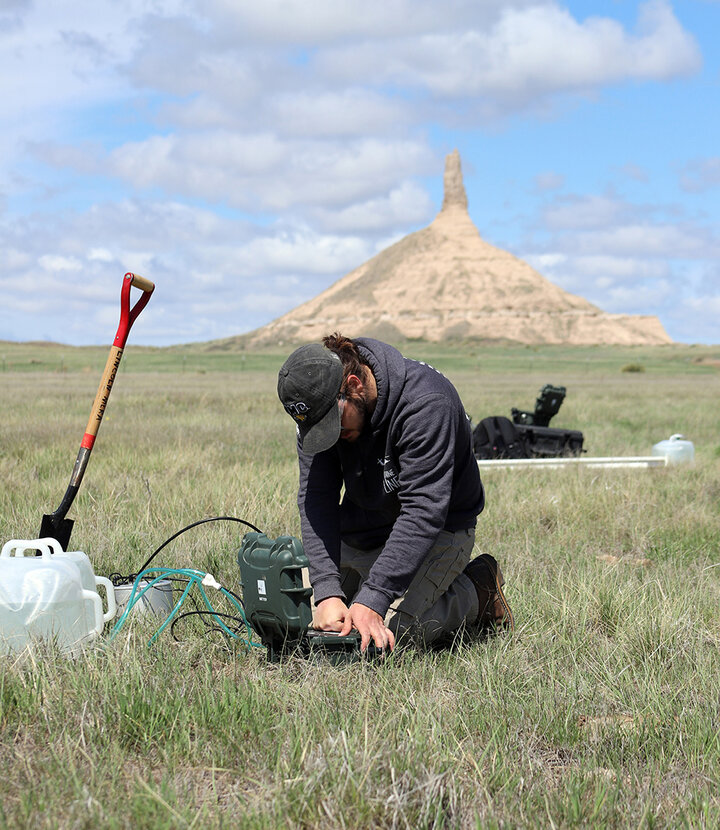
Paesl sets up one of three Saturo Infiltrometers on the site. The machine will determine the infiltration rate or how fast water enters the soil, typically expressed as the minutes needed for the soil to absorb each inch of water applied to the surface.
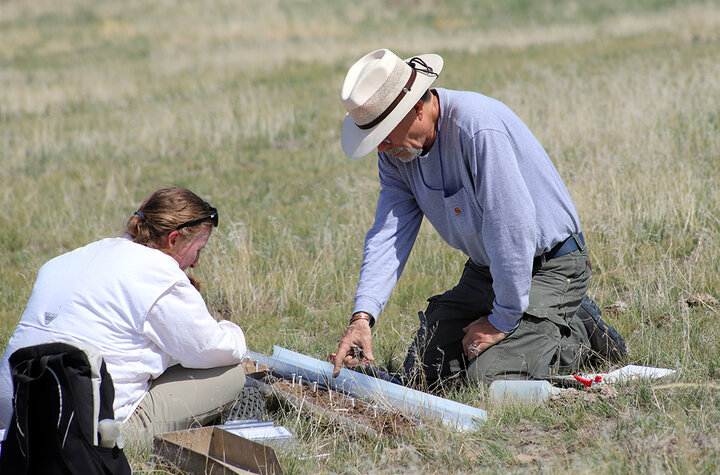
Elizabeth Gray (left), Nebraska NRCS assistant state soil scientist, and Latta discuss the soil characteristics of core soil samples from one of the sites near Chimney Rock. After their in-field findings were recorded, Gray collected samples from the trays for laboratory analysis.

Hackbart uses the hue, value and chroma visual color system of the Munsell Soil Color chart to determine the color characteristics of damp soil.

The in-field group from May 10, 2023 (from left): Kate Zander, UNL PREEC range technician; Saurav Das, UNL PREEC research assistant professor; Aaron Hird, Nebraska NRCS state soil health specialist; Riley Hackbart, Nebraska NRCS soil scientist; Elizabeth Gray, Nebraska NRCS assistant state soil scientist; Greg Paesl, Nebraska MLRA soil scientist; Ana Clara Dos Santos Rodrigues, UNL PREEC range science intern; Casey Latta, Nebraska MLRA Office lead soil scientist (not pictured).
